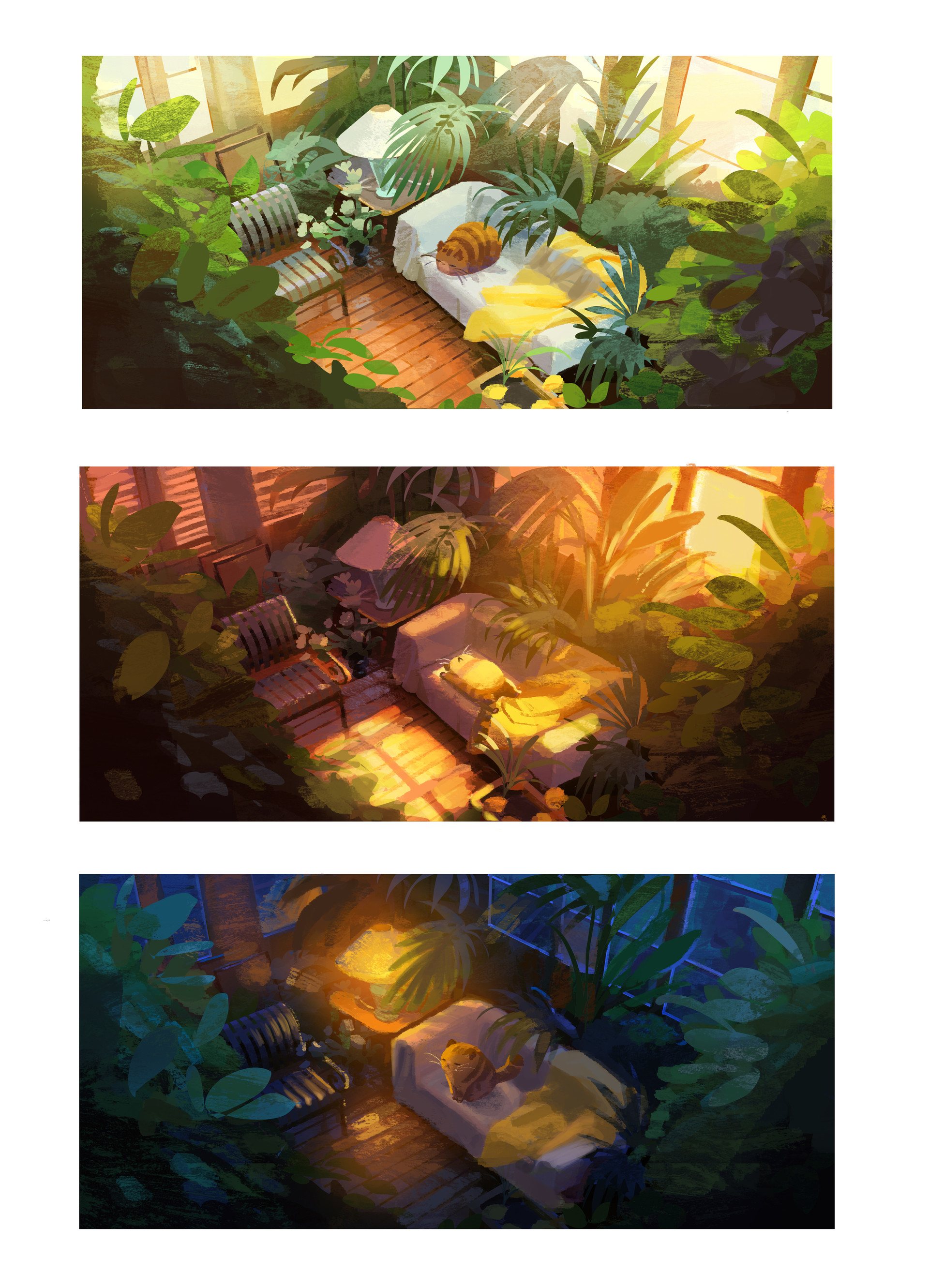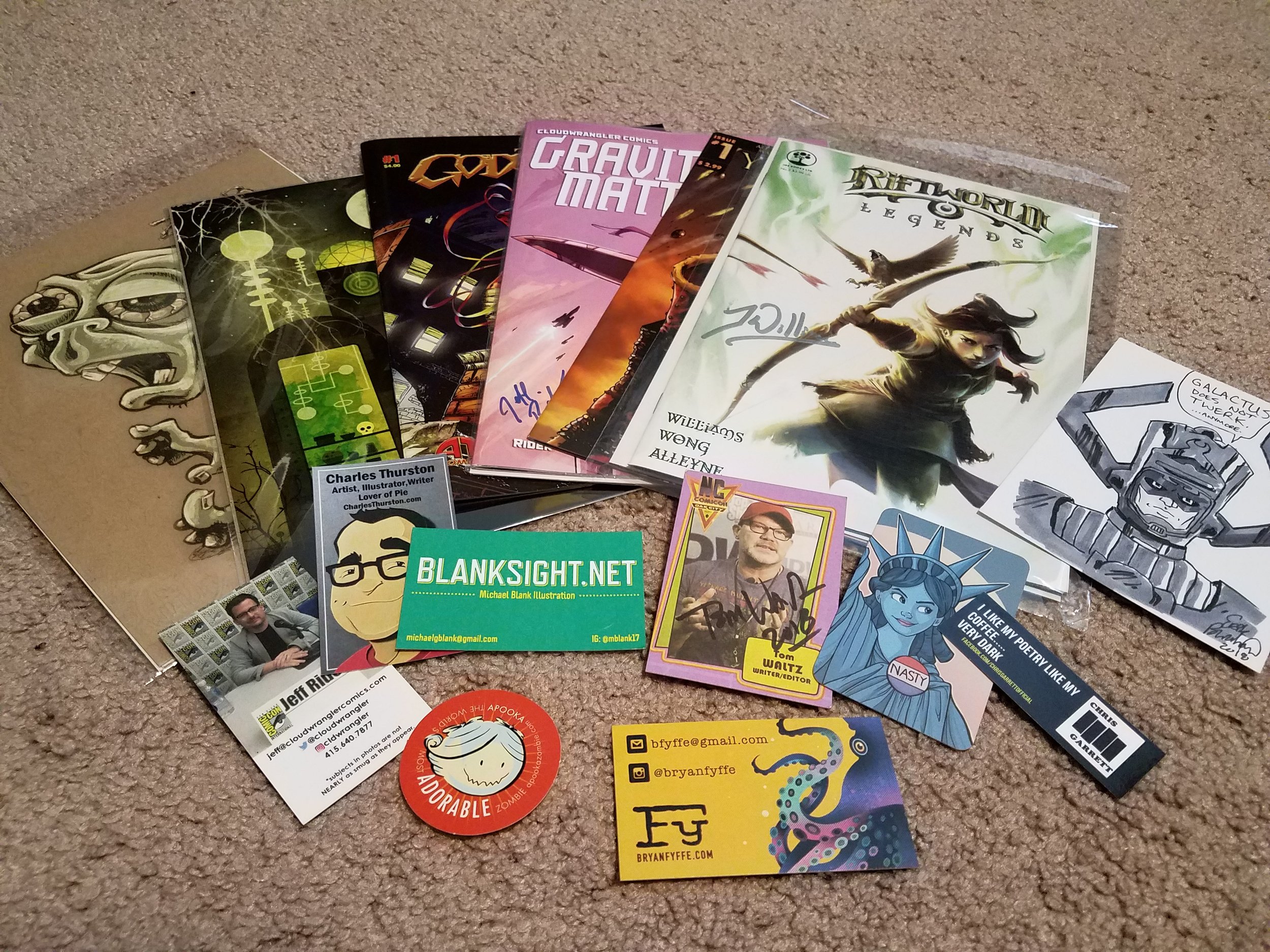Hi everybody,
I want to talk about adding life to everyday mundane objects. I think the three best things to liven up an ordinary object include:
1) adding in some sort of human element,
2) adding in elements of nature,
Or at the very least,
3) adding movable and bendable parts.
In my opinion, storytelling with an image is more compelling when the items in the image feel like they’ve been tampered or handled by something living. It instantly adds a little more character and interest to the piece.
Just a regular box.
If I were to draw a stack of boxes in the background of a scene, it’s important to think about each object as having a life of its own. The box on the left has a few nicks and is slightly off-center, which is fine. But for it to get there, a human or human-like character would’ve had to place it there. There might be tape on the outside. It might be a little squished from being sat on or having a heavy box set on top of it. Also, adding a simple “fragile” symbol and bar code implies it has been or will be handled by a human.
Remember, moderation is key. Just as I wouldn’t draw 20 plain boxes in the background, I wouldn’t draw 20 interesting boxes in the background either. There’s a chance things would get a little too confusing and distract from the main point of the images. After all, these boxes are meant as background props.
Often times as an artist, you’ll find yourself drawing the same background images over and over. It’s nice to add a little bit of disparity to them every once in a while. For this brick wall, I darkened some of the colors on the bricks to add some randomness and imperfection to the wall. Humans are imperfect. If they are flawless, they are instantly unrelatable. That’s why it’s hard for me to relate to most people. Just kidding.
Since the wall is exposed to the elements of nature, you can also add moss or grime build up. Moss growth and grime build up has a tendency to be random. You’re allowed full freedom to place them anyway you’d like, but tastefully of course. Gum, bird droppings, spit, and any other signs of tampering can do a great deal as well.
Metallic objects are a little more difficult. They are as cold and emotionless as they come. Adding dents will help, to show it has been handled and has gone through some wear and tear. Rust, like moss, is also a great naturally occurring detail to sprinkle in. The great thing about rust and moss is that you can add a little or a lot and it would be completely fine, depending on what you want. Adding a label or company logo instantly brings it back to life. It shows that it has history and a purpose. It was created for a reason by a group of people and is meant to be used in a certain way.
If all else fails and you’re not able to add rust and labels and the like, adding movable and bendable parts may help. For the oxygen tank, I’ve added in little tubes to break away from the form. Also, other human elements like nuts and bolts, pressure gauges or free flowing things like smoke and dripping water can do a great job to add life to metal objects.
Of course, if you want your image to be lifeless and serious, you would need to go in the opposite direction and keep it as clean as possible. It’s all about what kind of story you want to tell.
That’s it for now. Thanks for reading!



































